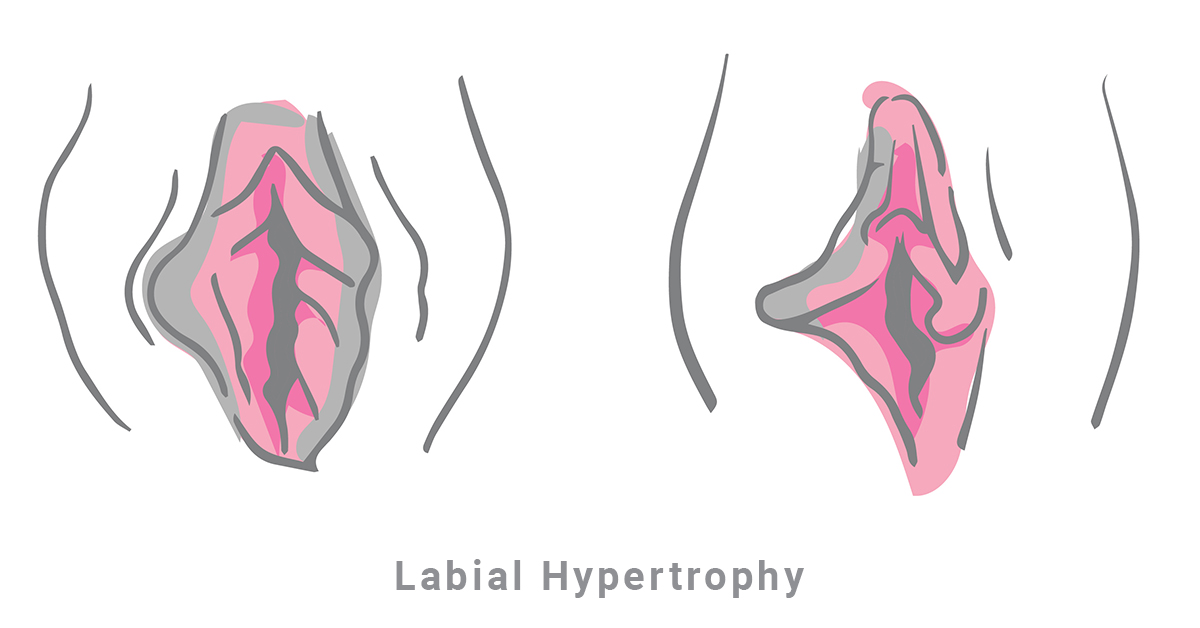Labial hypertrophy refers to the enlargement of the labia minora (the inner vaginal lips) beyond what is considered typical. While variations in labial size and shape are entirely normal, some individuals experience significant enlargement that may cause discomfort, irritation, or self-consciousness. This article explores the causes, symptoms, and treatment options for labial hypertrophy.
What is Labial Hypertrophy?
Labial hypertrophy is a condition where the labia minora are noticeably larger, asymmetrical, or elongated compared to the average anatomical structure. This condition does not inherently indicate any health problem but can contribute to physical discomfort and emotional distress for some individuals.
What Does Labial Hypertrophy Look Like?
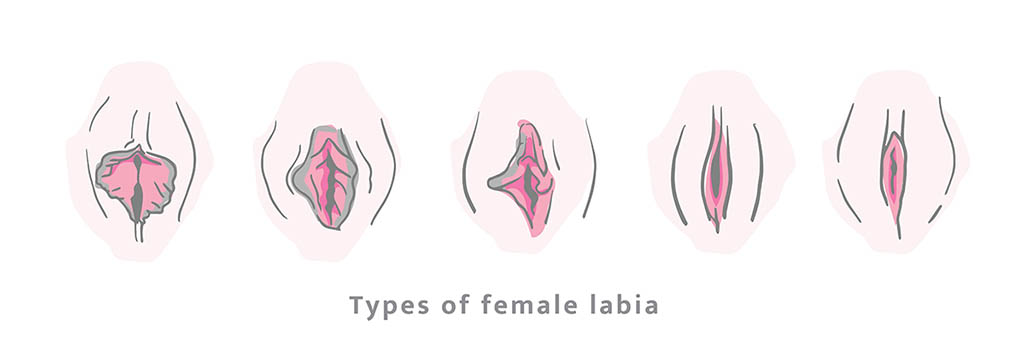
Labial hypertrophy varies widely among individuals. Some common characteristics include:
- Labia minora extending beyond the labia majora (outer lips)
- Uneven or asymmetrical labial tissue
- Increased thickness or pigmentation of the inner labia
While labial hypertrophy is generally harmless, individuals may experience irritation from friction, difficulty wearing certain clothing, or self-consciousness about their appearance.
How Common is Labial Hypertrophy?
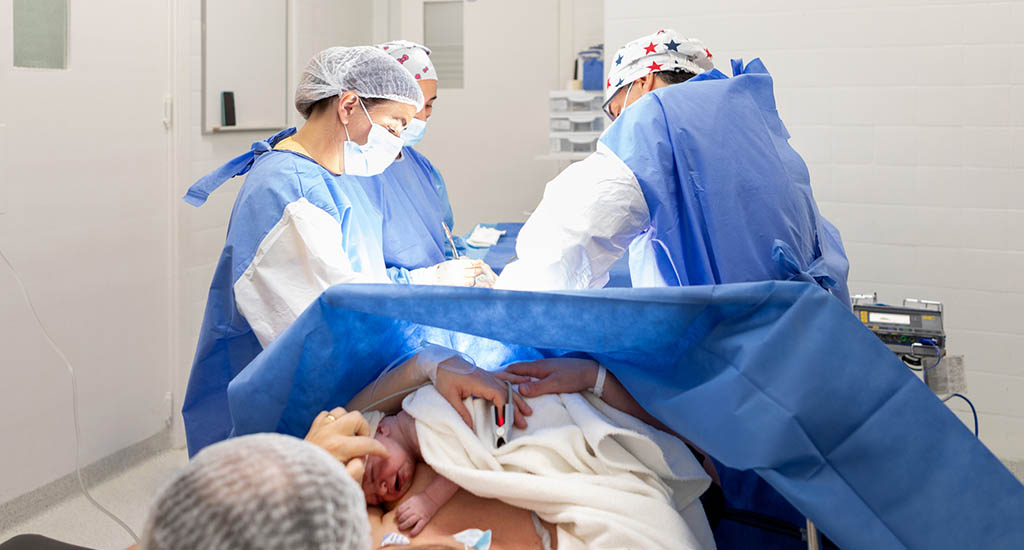
Labial hypertrophy is relatively common, although its exact prevalence is unclear. A study found that variations in labial size are widespread, with many women having asymmetrical or larger labia minora1. The condition is often noticed during puberty, after childbirth, or due to hormonal changes.
Causes of Labia Minora Hypertrophy
The exact causes of labia minora hypertrophy are not always clear. However, several factors may contribute to this condition:
1. Genetics
Many women naturally have enlarged labial hypertrophy due to inherited traits. Just as eye color or height varies, labial size is influenced by genetic factors.
2. Hormonal Changes
Puberty, pregnancy, and menopause can alter estrogen levels, affecting the size and elasticity of the labia minora. Hormonal fluctuations may lead to growth or increased pigmentation in the tissue.
3. Chronic Irritation or Friction
Tight clothing, frequent cycling, horseback riding, or other activities that cause repeated friction may contribute to inner labial hypertrophy over time.
4. Aging and Childbirth
Aging causes skin elasticity to change, and childbirth can stretch vaginal tissues, sometimes leading to permanent alterations in labial size.
5. Medical Conditions and Medications
Certain medical conditions, such as hormonal imbalances or chronic inflammation, may lead to enlargement or asymmetry over time, contributing to enlarged labial hypertrophy2.
Symptoms & Potential Concerns of Labial Hypertrophy
Labial hypertrophy, whether affecting the labia minora or labia majora, can lead to a variety of physical and psychological concerns. While the condition is not inherently harmful, some women experience discomfort and functional challenges that impact daily life.
1. Physical Discomfort
One of the most common complaints associated with inner labial hypertrophy is persistent discomfort. Women with enlarged labial hypertrophy may experience irritation or chafing, particularly during physical activities such as cycling, running, or horseback riding.

Additionally, friction from tight clothing, such as leggings or swimsuits, can cause redness and soreness. In some cases, labia minora hypertrophy can lead to pain during sexual intercourse due to increased tissue sensitivity or pulling of the excess skin.
2. Hygiene Challenges

Maintaining proper hygiene can become difficult when excess labial tissue folds over, trapping moisture, sweat, and bacteria. This can increase the risk of infections such as yeast infections or bacterial vaginosis. Women with labial hypertrophy may find it challenging to thoroughly clean the area, leading to recurring irritation, itching, or unpleasant odors.
3. Self-Consciousness & Psychological Concerns

Many women with labial hypertrophy feel self-conscious about their appearance, especially when wearing form-fitting clothing or swimwear. Some may experience distress or embarrassment in intimate situations, affecting their confidence and emotional well-being. Social stigma and unrealistic beauty standards regarding female genitalia can further contribute to anxiety and body image concerns.
4. Functional Impact
Excess labial tissue can interfere with daily activities, making it uncomfortable to walk, sit, or exercise. Some women may find that their labial hypertrophy causes discomfort when crossing their legs or engaging in activities that involve prolonged sitting. Additionally, sexual discomfort due to labia minora hypertrophy may reduce sexual satisfaction, leading to avoidance of intimacy.

Addressing these concerns through medical consultation can help individuals explore labial hypertrophy treatment options that improve both physical comfort and overall well-being.
Labial Hypertrophy Treatment Options
Treatment for labial hypertrophy depends on the individual’s symptoms and personal preferences. While many people do not require treatment, others seek medical interventions for comfort or aesthetic reasons.
1. Non-Surgical Management
For mild cases of labial hypertrophy, conservative treatments may be sufficient:
- Proper hygiene: Keeping the area clean and dry can reduce irritation.
- Avoiding irritants: Loose-fitting clothing and breathable fabrics can minimize friction and discomfort.
- Topical treatments: Over-the-counter barrier creams or prescription ointments may help soothe irritation.
2. Labiaplasty (Surgical Reduction)
For individuals seeking a permanent solution, labiaplasty is the primary surgical option. This procedure reshapes and reduces the size of the labia minora to alleviate discomfort or achieve a desired appearance.
How Is Labiaplasty Performed?
Labiaplasty is a surgical procedure designed to reshape and reduce the size of the labia minora. In some cases, procedures targeting the labia majora, such as fat transfer or reduction, may also be performed, but these are distinct from standard labiaplasty.
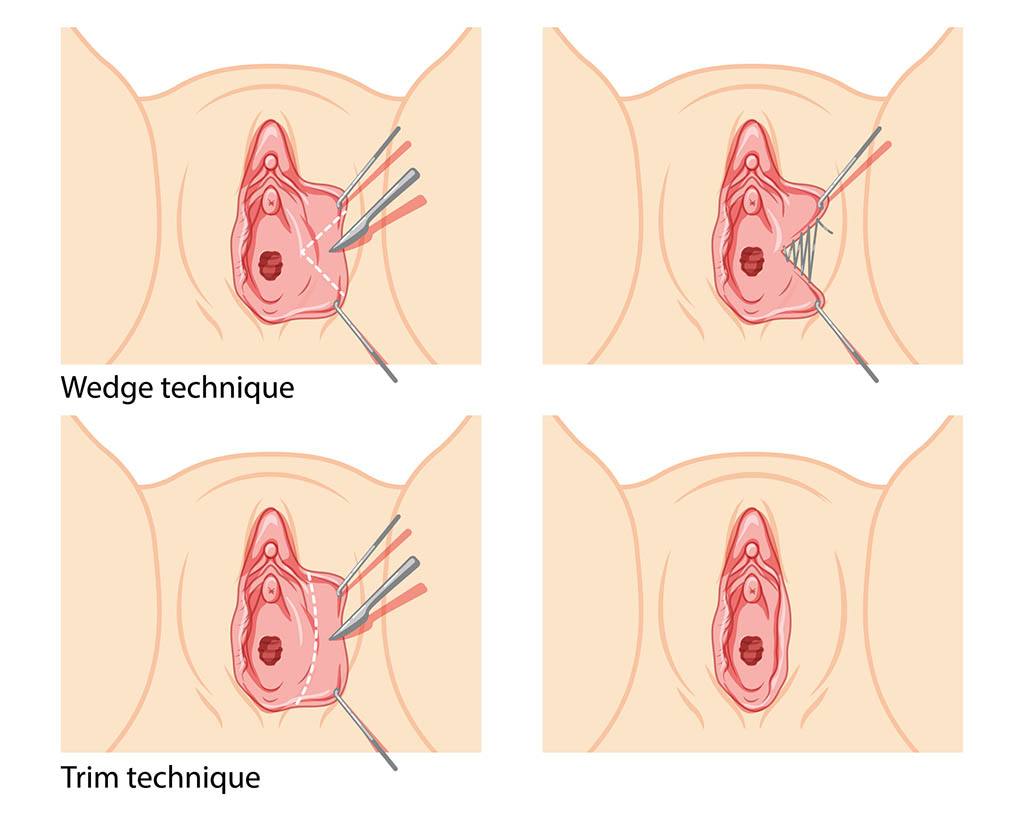
1. Trim Method
The trim method is the most commonly used technique for labial hypertrophy treatment. In this procedure, the surgeon removes excess tissue along the edge of the labia minora, ensuring a more uniform and refined contour.
This method is particularly beneficial for women with inner labial hypertrophy where the edges are darkened, irregular, or thickened due to friction or aging. The trim technique allows for precise control over the final shape and is often preferred for its simplicity and effectiveness.
2. Wedge Method
The wedge technique involves removing a V-shaped section of tissue from the central part of the labia minora while preserving the natural labial edge. This approach maintains the original anatomical shape and reduces tension along the incision line, which may help minimize scarring.
The wedge method is often recommended for patients who want to retain a more natural-looking appearance while reducing enlarged labial hypertrophy.
3. Laser Labiaplasty
Laser labiaplasty utilizes a high-precision laser to cut and remove excess tissue. The laser cauterizes the blood vessels as it cuts, reducing bleeding, swelling, and overall healing time. This technique is particularly beneficial for patients concerned about post-surgical recovery, as it minimizes tissue trauma.
However, laser labiaplasty may not be suitable for all cases, as some surgeons prefer traditional surgical methods for better control over tissue removal and reshaping.
Each labiaplasty technique is chosen based on individual anatomy, aesthetic goals, and functional needs. Consulting a board-certified surgeon ensures the best approach for long-term comfort and satisfaction.
Labiaplasty is typically performed under local or general anesthesia and requires a recovery period of a few weeks3.
3. Post-Surgical Recovery
Recovery from labial hypertrophy treatment involves:
- Resting for at least a week to minimize swelling
- Avoiding strenuous activities and sexual intercourse for 4-6 weeks
- Using prescribed pain relievers and anti-inflammatory medications
Most patients experience a significant improvement in symptoms after healing, with a high satisfaction rate4.
How to Fix Labial Hypertrophy Without Surgery
For individuals who prefer non-invasive solutions, lifestyle adjustments and self-care can help manage symptoms. These include:
- Wearing loose-fitting underwear to reduce irritation
- Using soothing creams or cold compresses to relieve discomfort
- Practicing pelvic floor exercises to improve circulation and skin elasticity
While these methods will not alter the size of the labia, they may help alleviate associated symptoms.

How Much is Labial Hypertrophy Treatment?
The cost of labial hypertrophy treatment varies based on the type of procedure, location, and healthcare provider. On average:
- Labiaplasty surgery ranges from $4,000 to $6,800 in NYC, including surgeon fees, anesthesia, and facility costs.
- Laser treatments may cost between $1,500 and $5,000 per session, depending on the complexity.
- Non-surgical treatments, such as prescription creams or physical therapy, may be covered by insurance if deemed medically necessary5.
Navigating Treatment Options for Labial Hypertrophy
Labial hypertrophy is a natural variation in anatomy that does not typically require medical intervention. However, for individuals experiencing discomfort or self-consciousness, multiple treatment options, including conservative management and surgical procedures, are available. Consultation with a qualified gynecologist or plastic surgeon is recommended for those considering labial hypertrophy treatment.
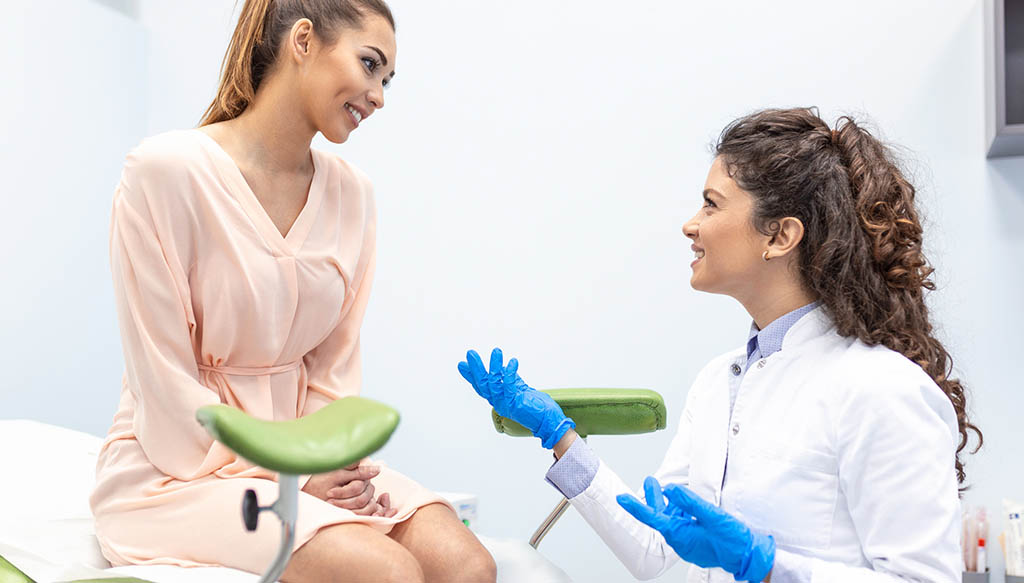
At our state-of-the-art Labiaplasty NYC clinic, we specialize in labiaplasty and advanced vaginal rejuvenation procedures, offering safe, effective, and personalized treatments tailored to your needs. Whether you’re seeking relief from discomfort or looking to enhance your confidence, our experienced specialists provide compassionate care in a professional setting. We prioritize your comfort, safety, and aesthetic goals using the latest techniques.
Contact us today to schedule a consultation and explore your options for labial hypertrophy treatment or vaginal rejuvenation. Let us help you feel your best!
References
- Lloyd, J., Crouch, N.S., Minto, C.L., Liao, L.M., & Creighton, S.M. (2005). Female genital appearance: “normality” unfolds. BJOG: An International Journal of Obstetrics & Gynaecology, 112(5), 643-646.
- Munhoz, A.M., Filassi, J.R., & Ricci, M.D. (2017). Aesthetic and functional labiaplasty: Surgical options and patient satisfaction. Plastic and Reconstructive Surgery Global Open, 5(4), e1267.
- Goodman, M.P. (2011). Female genital cosmetic and plastic surgery: a review. Journal of Sexual Medicine, 8(6), 1813-1825.
- Hamori, C.A. (2014). Aesthetic surgery of the female genitalia: Labiaplasty and beyond. Plastic and Reconstructive Surgery, 134(6), 1040-1050.
- Sorice, S.C., Li, A.Y., Canales, F.L., & Furnas, H.J. (2019). Why women request labiaplasty: A prospective study of motivations in 100 consecutive patients. Aesthetic Surgery Journal, 39(12), 1319-1325.

